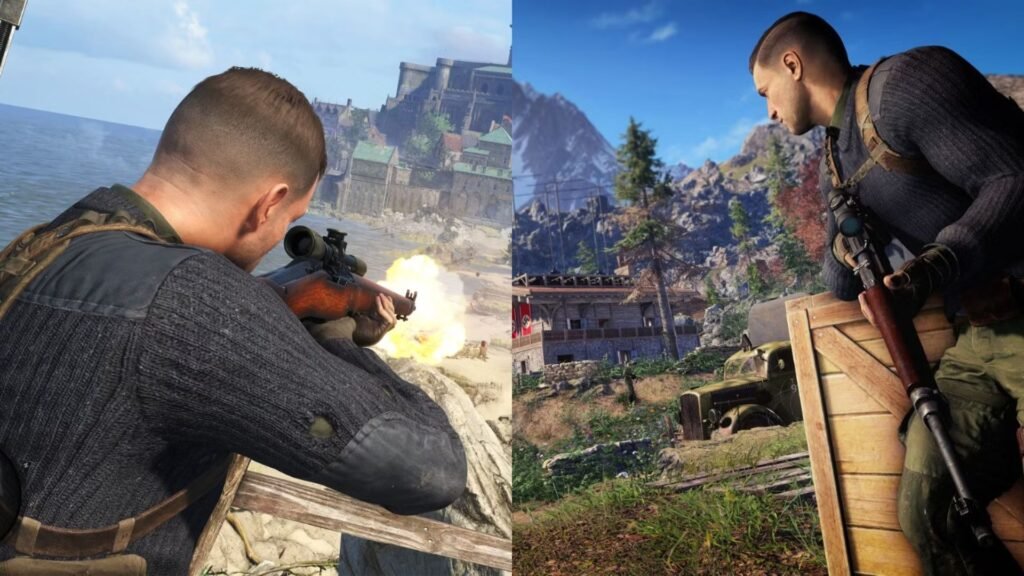Shooter games have evolved significantly over the years, driven by advancements in technology and creative design innovations. From improved graphics to new gameplay mechanics, these innovations have transformed how players experience and interact with shooter games. This article explores the latest innovations in shooter game design that are shaping the future of the genre.
The shooter game genre has seen remarkable evolution, driven by technological advancements and creative innovation. New features and design approaches enhance player immersion, strategy, and enjoyment. Understanding these innovations can provide insight into the current and future trends in shooter game design.

Advanced Graphics and Realism
High-Resolution Textures and Environments:
- Enhanced Visual Fidelity: Modern shooter games utilize high-resolution textures and detailed environments to create more immersive and realistic worlds. Improved graphics engines render stunning visuals that enhance player engagement.
- Dynamic Weather and Lighting: Innovations in dynamic weather systems and lighting effects add realism and impact gameplay. Changing weather conditions can affect visibility and tactics, creating more dynamic and unpredictable scenarios.
Realistic Physics and Animation:
- Improved Character Movements: Advances in animation technology enable more lifelike character movements and interactions. Realistic physics simulations enhance the authenticity of gunplay and environmental interactions.
- Destructible Environments: Many games now feature destructible environments that allow players to alter the battlefield. This adds a layer of strategy as players can create new pathways or destroy cover.
Evolving Gameplay Mechanics
Enhanced AI Behavior:
- Adaptive Enemy AI: Modern shooters employ advanced AI that adapts to player behavior, providing a more challenging and engaging experience. Enemies can react intelligently, use cover effectively, and coordinate attacks.
- Allied AI Companions: Improved AI companions assist players in various roles, such as providing tactical support or covering specific areas. This enhances solo play and helps players manage complex scenarios.
Innovative Gameplay Modes:
- Battle Royale and Survival Modes: New gameplay modes, such as Battle Royale and survival, have redefined multiplayer shooter experiences. These modes introduce new mechanics like shrinking play zones and resource management, adding depth to gameplay.
- Co-Op and PvE Integration: Many shooters now blend cooperative and player-versus-environment (PvE) elements with traditional competitive gameplay. This integration allows players to team up against AI enemies while maintaining competitive aspects.
Enhanced Player Customization
Weapon and Gear Customization:
- Modular Weapon Systems: Shooter games offer extensive weapon customization, allowing players to modify and personalize their firearms with attachments, skins, and upgrades. This customization impacts gameplay and player strategy.
- Character Customization: Advanced customization options for characters, including outfits, accessories, and emotes, enable players to express their individuality and stand out in the game world.
Personalized Playstyles:
- Skill Trees and Perks: Many shooters now feature skill trees and perk systems that let players tailor their abilities and playstyles. This customization allows players to develop unique strategies and roles within their team.
Integration of Virtual and Augmented Reality
Immersive VR Experiences:
- Virtual Reality Integration: VR technology brings a new level of immersion to shooter games. Players can physically move, aim, and interact with the game world, creating a more engaging and realistic experience.
- Enhanced Interaction: VR shooters offer unique interaction methods, such as using motion controllers for precise aiming and movement. This innovation changes how players approach combat and strategy.
Augmented Reality Features:
- AR-Enhanced Gameplay: Augmented reality (AR) adds interactive elements to the physical world, blending real and virtual environments. AR features can provide additional information, objectives, or interactive elements that enrich the gameplay experience.
Advanced Multiplayer Features
Cross-Platform Play:
- Unified Player Bases: Cross-platform play allows players on different gaming systems to compete together. This feature broadens the player base and enhances matchmaking, creating more diverse and competitive environments.
Esports Integration:
- Professional Competitive Scenes: The rise of esports has influenced shooter game design, with many games incorporating features that support competitive play, such as ranked modes, tournament support, and spectator options.
- Community and Streaming Integration: Integration with streaming platforms and community features allows players to share their experiences, engage with audiences, and participate in live events.
Conclusion
The innovations in shooter game design continue to push the boundaries of what’s possible, creating richer and more engaging experiences for players. From advanced graphics and AI to immersive VR and cross-platform play, these developments are shaping the future of shooter games. Embracing these innovations can enhance your gaming experience and provide a glimpse into the exciting future of the genre.

